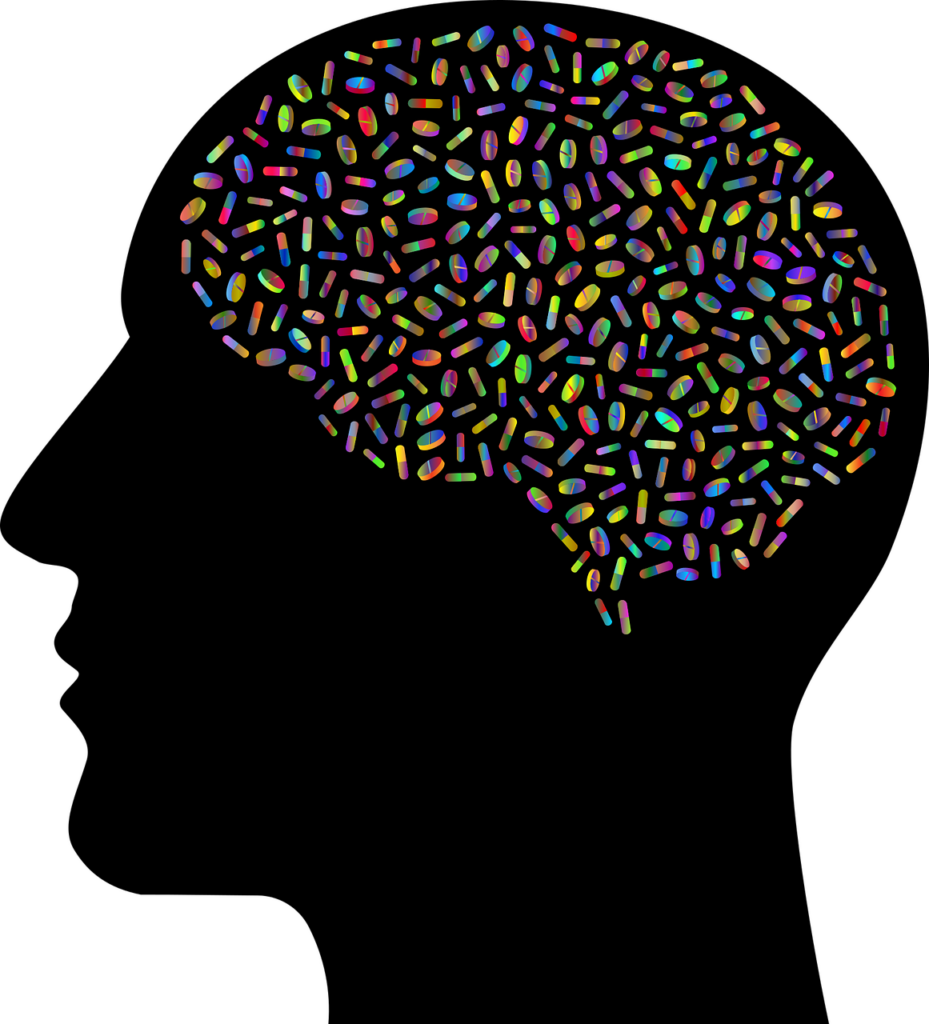Psychoactive drugs, often surrounded by stigma and controversy, have long captured the fascination of humanity. These substances possess the unique ability to alter consciousness, leading individuals into realms of heightened perception, euphoria, or sometimes, tumultuous experiences. From ancient rituals to modern pharmacology, the exploration of psychoactive drugs / compounds has been intertwined with human history, leaving an indelible mark on cultures and societies worldwide.
Understanding Psychoactive Drugs:
Psychoactive drugs encompass a vast array of substances that act on the central nervous system, affecting brain function and altering perception, mood, consciousness, cognition, and behavior. They can be broadly categorized into stimulants, depressants, hallucinogens, and dissociatives, each with its distinct effects and mechanisms of action.

Stimulants, such as caffeine, nicotine, amphetamines, and cocaine, increase alertness, elevate mood, and enhance cognitive function by stimulating the release of neurotransmitters like dopamine and norepinephrine. These substances are often associated with increased energy levels and heightened focus, but prolonged use can lead to dependence and adverse health effects.
Conversely, depressants, including alcohol, benzodiazepines, and opioids, have a sedative effect on the central nervous system, inducing relaxation, euphoria, and pain relief. While moderate use of some depressants may produce feelings of tranquility and sociability, excessive consumption can lead to addiction, respiratory depression, and even overdose.
Hallucinogens, such as LSD, psilocybin (magic mushrooms), and MDMA (ecstasy), profoundly alter perception, cognition, and mood, often eliciting vivid sensory experiences and altered states of consciousness. These substances exert their effects by primarily interacting with serotonin receptors in the brain, leading to profound shifts in perception and consciousness. Research into the therapeutic potential of hallucinogens for mental health conditions like depression, PTSD, and addiction is gaining traction, shedding new light on their profound healing properties.
Dissociatives, exemplified by substances like ketamine, PCP, and DXM, induce feelings of detachment from oneself and the environment, often accompanied by hallucinations, distortions of reality, and altered sensory perceptions. These drugs work by blocking NMDA receptors in the brain, leading to dissociative states characterized by a sense of detachment from physical sensations and reality.
Historical and Cultural Significance:
The use of psychoactive drugs / substances dates back thousands of years, with evidence of their consumption found in archaeological sites across the globe. Indigenous cultures have long incorporated psychoactive plants into religious ceremonies, healing rituals, and spiritual practices, viewing them as conduits to divine realms or tools for self-exploration and introspection.
In ancient civilizations such as those of the Aztecs, Maya, and Egyptians, psychoactive drugs / substances played a central role in religious ceremonies, shamanic rituals, and cultural traditions. Plants like peyote, ayahuasca, and coca held sacred significance and were revered for their ability to facilitate communion with the divine, heal the sick, and communicate with spirits.
During the 20th century, psychoactive drugs became the subject of intense scientific scrutiny and societal debate. The discovery of LSD in the 1940s by Swiss chemist Albert Hofmann ushered in a new era of psychedelic research and experimentation, culminating in the psychedelic revolution of the 1960s. However, the widespread recreational use of psychedelics, coupled with government crackdowns and moral panic, led to their classification as Schedule I substances and a subsequent halt in research for several decades.
Resurgence of Interest and Therapeutic Potential:
In recent years, there has been a resurgence of interest in the therapeutic potential of psychoactive drugs, particularly psychedelics, for treating a range of mental health disorders. Clinical trials investigating the use of substances like psilocybin, MDMA, and ketamine have shown promising results in the treatment of depression, anxiety, PTSD, addiction, and end-of-life distress.
Psilocybin, the psychoactive compound found in magic mushrooms, has garnered attention for its ability to induce profound mystical experiences and promote long-lasting changes in personality, outlook, and behavior. Studies have shown that a single dose of psilocybin, administered under controlled conditions, can lead to significant reductions in depressive symptoms and existential distress in patients with life-threatening illnesses.
MDMA-assisted therapy, which combines the empathogenic effects of MDMA with psychotherapy, has shown remarkable efficacy in the treatment of PTSD and trauma-related disorders. Clinical trials have demonstrated that MDMA promotes feelings of trust, emotional openness, and empathy, facilitating the processing and integration of traumatic memories within a therapeutic context.
Ketamine, originally used as an anesthetic and analgesic, has emerged as a rapid-acting antidepressant with the potential to provide relief for individuals with treatment-resistant depression. Unlike traditional antidepressants, which may take weeks to exert their therapeutic effects, ketamine infusion therapy can induce rapid and sustained improvements in mood and suicidal ideation within hours or days of administration.
Conclusion
The exploration of psychoactive drugs represents a complex and multifaceted journey into the depths of human consciousness and experience. From ancient rituals to modern medicine, these substances have shaped cultures, societies, and individual lives in profound and often enigmatic ways.
While psychoactive drugs carry inherent risks and potential for misuse, their therapeutic potential for treating mental health disorders cannot be overlooked. With ongoing research and careful integration into clinical practice, these substances may offer new hope and healing for individuals struggling with conditions that have proven resistant to conventional treatments.
As we continue to unravel the mysteries of the mind and explore the therapeutic potential of psychoactive compounds, it is essential to approach their use with reverence, respect, and a commitment to promoting safety, well-being, and holistic healing for all.
About Liberty Wellness
The caring treatment team at Liberty Wellness delivers compassionate and effective addiction services for men and women, including help with fentanyl abuse. Our premier addiction recovery facility offers custom treatment programs and plans to meet the unique needs of adults coming from a wide variety of backgrounds and ages.
The dedicated addiction professionals assess each client to ensure that each individual gets the exact treatment that they desperately need. Our peaceful location and warm staff immediately puts our clients at ease. This healing atmosphere is essential for someone about to embark on a life saving battle to overcome a specific addiction.
Any additional co-occurring mental health disorders are treated concurrently. This is not a one-size-fits-all style of addiction treatment. Those that come to Liberty Wellness will learn important and highly effective coping mechanisms to soundly defeat their addiction behaviors/urges for good.
Passionate addiction counselors and a highly skilled medical team combine forces to give each person the kind of deep support that they need while embarking on this rejuvenating life journey towards sobriety. Ask about our holistic addiction treatment programs.
Exploring the Depths of Psychoactive Drugs by Liberty Wellness





